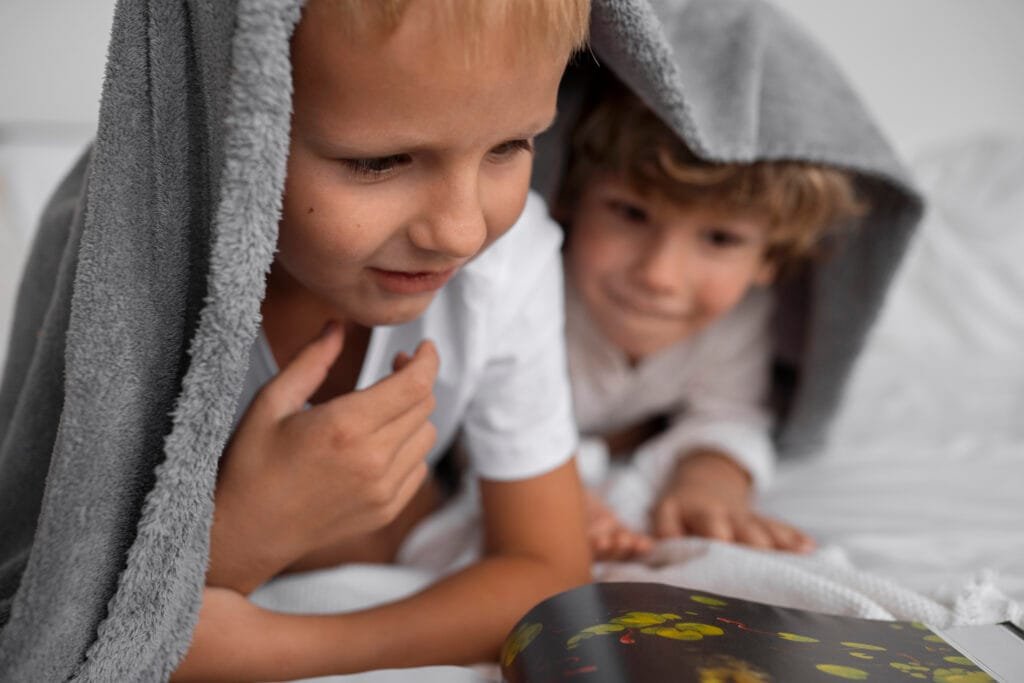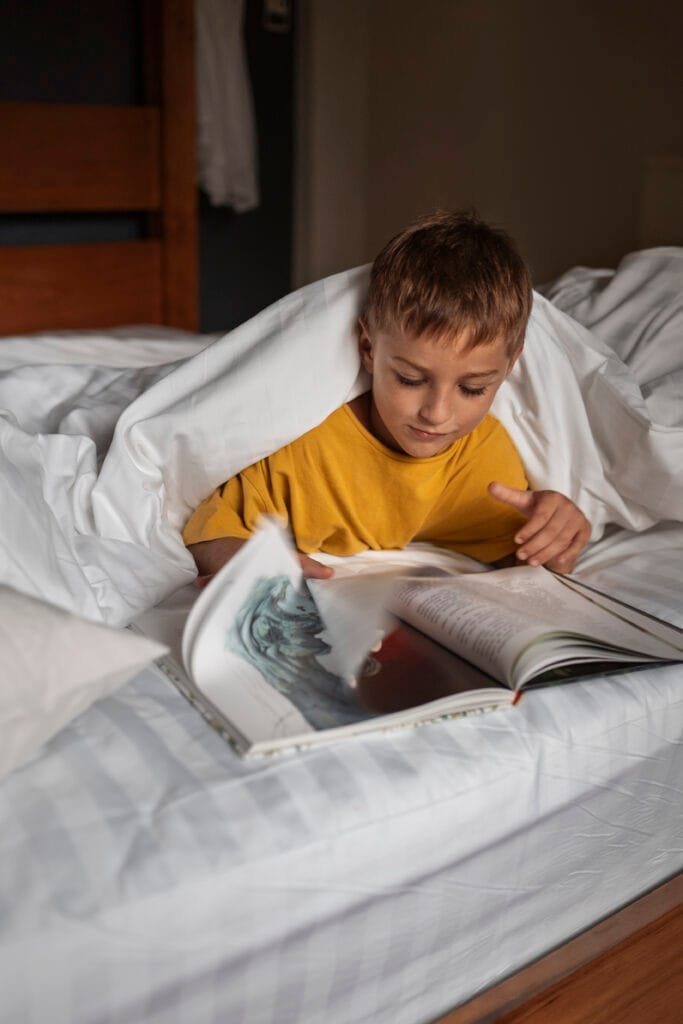Sleep forms the foundation of family health and happiness. Modern families face unique sleep challenges, from digital distractions to packed schedules. This post explains research-backed mindfulness practices that create peaceful bedtimes and restful nights for the whole family.

The Science Behind Family Sleep Patterns
Sleep patterns connect all family members through shared environments and routines. Understanding these connections helps parents make effective changes that benefit everyone’s rest.
Sleep researcher Dr. Sarah Miller explains:
“Family sleep habits create patterns that affect everyone’s circadian rhythms. When one family member sleeps better, it creates a positive cycle for all.”
Research reveals clear benefits of mindful family sleep practices:
Improved Sleep Metrics
Children who practice mindful bedtime routines fall asleep 15 minutes faster on average and experience 50% fewer night wakings. Parents report feeling more rested and patient the next day.
Enhanced Daily Function
Studies show children following mindful sleep routines demonstrate improved attention spans, better emotional regulation, and reduced anxiety during daytime activities.
Family Harmony
Peaceful bedtimes reduce family stress and strengthen parent-child bonds. Research indicates that families practising mindful bedtime routines report 40% fewer bedtime conflicts.
Essential Mindful Bedtime Practices
Each practice builds upon natural sleep mechanisms while creating special family moments. Start with one technique and gradually incorporate others as they become familiar.
The Quiet Hour
The hour before sleep significantly impacts sleep quality. This practice creates a gentle transition from day to night.
How It Works
The quiet hour triggers the body’s natural sleep preparation system. Reduced stimulation allows the brain to begin producing melatonin while lowering cortisol levels.
Benefits
- Reduces cortisol levels by 30%
- Helps children process daily emotions
- Creates natural melatonin production
- Improves family communication
- Reduces next-day irritability
Practical Steps
- Dim lights 60 minutes before bedtime
- Turn off screens and store devices
- Speak in soft voices
- Engage in quiet activities like reading or gentle stretching
Inner Critic Response: “There’s too much to do. We don’t have time for this.”
Solution: Start with 15 minutes and gradually extend the quiet period. Choose one quiet activity to begin with.

Mindful Body Scan
This practice helps release physical tension while teaching children body awareness and self-regulation skills.
How It Works
Body scanning directs attention to physical sensations, releasing muscle tension and calming the nervous system.
Benefits
- Releases physical tension
- Improves body awareness
- Reduces bedtime anxiety
- Teaches self-regulation
- Creates mind-body connection
Practical Steps
- Lie comfortably in bed
- Focus attention on each body part
- Release tension with each breath
- Notice warm, heavy sensations
- Use child-friendly imagery
Inner Critic Response: “The kids won’t sit still for this.”
Solution: Make it playful – pretend to be sleeping animals or use gentle music. Start with just toes and fingers.
Common Challenges and Solutions
Understanding typical obstacles helps parents maintain consistency and confidence in establishing healthy sleep routines.
Inconsistent Schedules
Modern family life often involves varying schedules and commitments. This challenge requires flexible yet consistent approaches.
Child sleep expert Lisa Thompson notes:
“Consistency matters more than perfection. Even two consistent nights create positive sleep patterns.”
Understanding the Impact
Irregular bedtimes disrupt circadian rhythms and create sleep debt. However, small steps toward consistency produce meaningful improvements.
Solutions
- Create a visual bedtime chart
- Set phone reminders
- Use gradual transitions
- Maintain core routine elements
- Plan for schedule variations

Resistance to Routine
Children naturally test boundaries around sleep. Understanding this resistance helps parents respond effectively.
Benefits of Addressing Resistance
- Builds emotional regulation
- Develops healthy sleep associations
- Improves parent-child bonding
- Creates lifetime sleep skills
- Reduces bedtime stress
Practical Steps
- Offer choices within boundaries
- Acknowledge feelings without changing limits
- Stay calm and consistent
- Use positive reinforcement
- Create bedtime success charts
Creating Your Family Sleep Sanctuary
The sleep environment powerfully influences sleep quality. Small changes create significant improvements.
Essential Elements
- Room temperature at 68-72°F (20-22°C)
- White noise machine
- Soft, dim lighting
- Comfortable bedding
- Minimal clutter
Benefits
- Reduces sleep onset by 20%
- Creates environmental sleep cues
- Minimizes disruptions
- Improves sleep quality
- Increases sleep duration
Inner Critic Response: “Perfect sleep environments cost too much.”
Solution: Start with basic changes like temperature adjustment and gradually add elements. Focus on essentials first.

Transform Your Family’s Sleep
Your family deserves peaceful nights and energetic days. Take the next step toward better sleep with professional support.
Book a private online session to create your personalized family sleep plan. Our sessions help families:
- Design custom bedtime routines
- Address specific sleep challenges
- Learn advanced mindfulness techniques
- Build confidence in sleep practices
- Create lasting positive changes
Schedule your consultation at
Sleep coach Hannah Roberts reminds us:
“Every family deserves peaceful nights. Small changes in bedtime mindfulness create big improvements in family well-being.”
Join other families who have improved their sleep through mindful practices. Book your session today and start your journey to restful family nights.
Remember: Better sleep creates happier families. Your peaceful nights begin with one small step.




